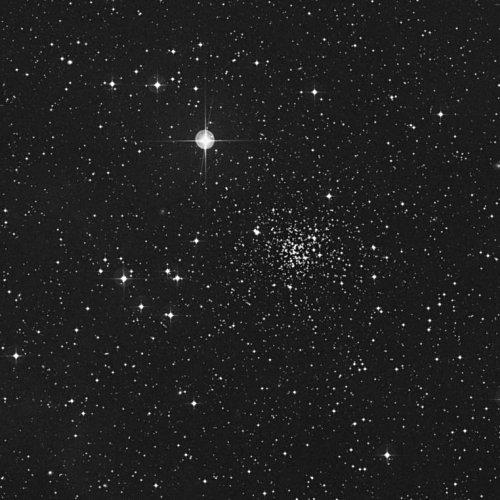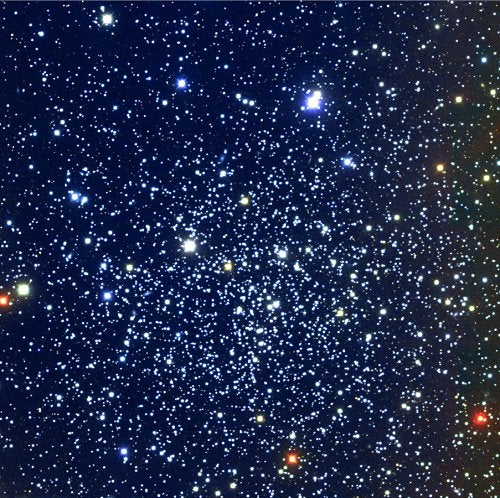Only a handful of clusters have endured as long as M67. The average life span of an open cluster is just a few hundred million years, but veterans like M67 have been touring the Milky Way since before our Sun first shone. These clusters are as lucky as they are mysterious. Images and details abound for younger, brighter clusters, but astronomers have difficulty collecting information on their seniors.
Since before the birth of the Sun, these clusters have avoided the destructive gravitational force of molecular clouds. Some of the older ones avoid the inner Milky Way, where the ruthless molecular clouds prowl, and enjoy an extended, protected existence in our Galaxy’s outer regions. Ninety percent of star clusters older than the Sun relax in this outer sanctuary.
Some seasoned clusters:
King 2 can be found in the constellation Cassiopeia. It is estimated at 5.6 billion years old.
NGC 2243 will be found in Canis Major. It is approximately 5.6 billion years old.
NGC 188 is located near the celestial north pole in the constellation Cepheus. This is probably the most famous of the older clusters. Current estimates put NGC 188 at 7.2 billion years old.
Berkeley 32 can be found in the constellation Monoceros. It is approximately 7.2 billion years old.
Arp-Madore is located between Canis Major and Puppis. It is approximately 8.3 billion years old.
NGC 6791, estimated to be 9.5 billion years old, can be found in Lyra.
Berkeley 17 in Auriga has truly managed the art of survival. Astronomers estimate its age at 10 to 12.6 billion years.
As technology advances and our knowledge of these objects grows, astronomers will get a more precise idea of their true ages.











